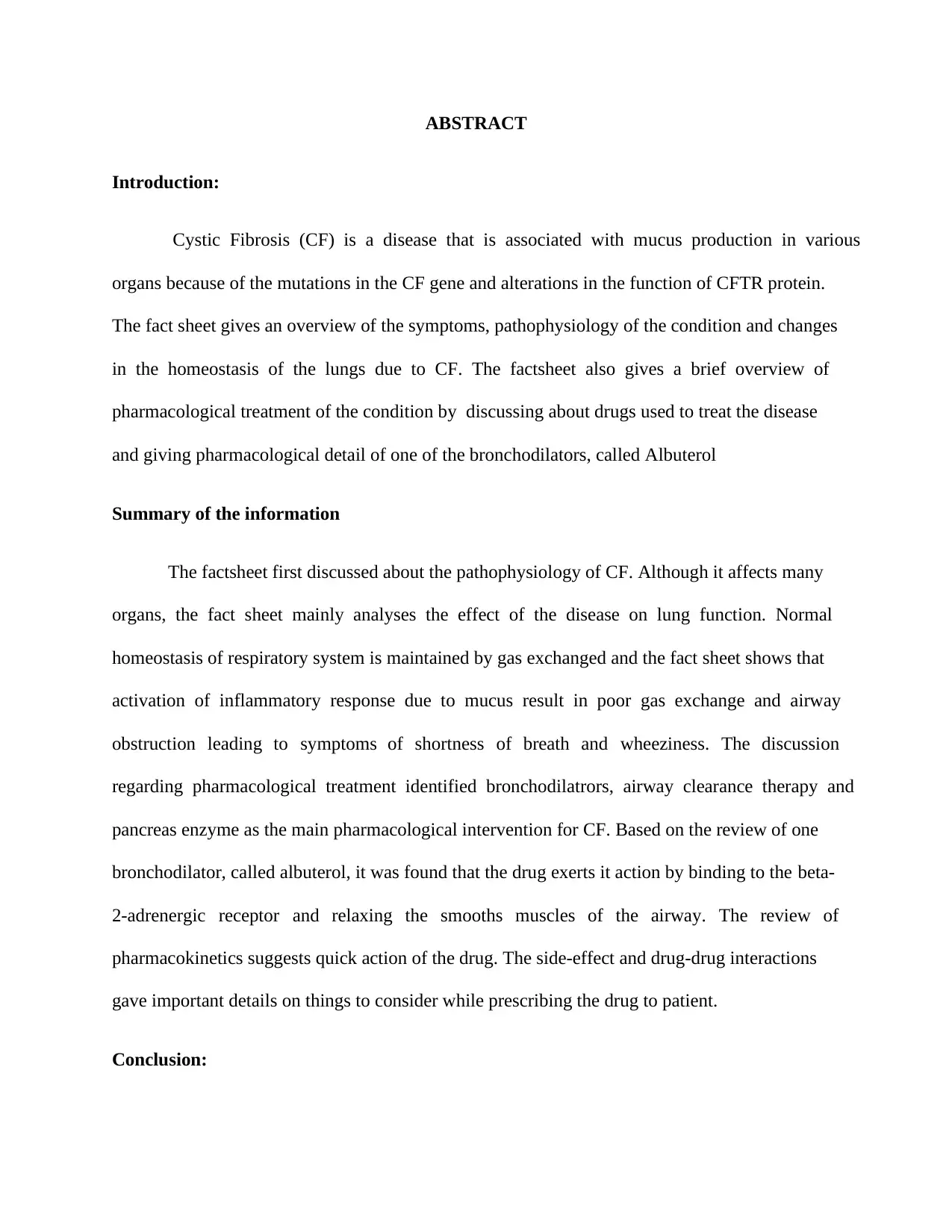Cystic Fibrosis: A review of the disease and treatment for nurses
VerifiedAdded on 2022/09/22
|2
|326
|29
Report
AI Summary
This report provides a comprehensive overview of Cystic Fibrosis (CF), focusing on its impact on lung function and the physiological changes associated with the disease. The report discusses the pathophysiology of CF, highlighting how mucus production and inflammation lead to impaired gas exchange and respiratory symptoms. It then examines pharmacological interventions, specifically bronchodilators like Albuterol, detailing their mechanism of action, pharmacokinetics, and potential side effects. The report emphasizes the importance of understanding drug interactions and patient safety, making it a valuable resource for nursing students and healthcare professionals seeking insights into CF management. The report helps in understanding the importance of CF on the lungs and the use of drugs like Albuterol.
1 out of 2








![[object Object]](/_next/static/media/star-bottom.7253800d.svg)